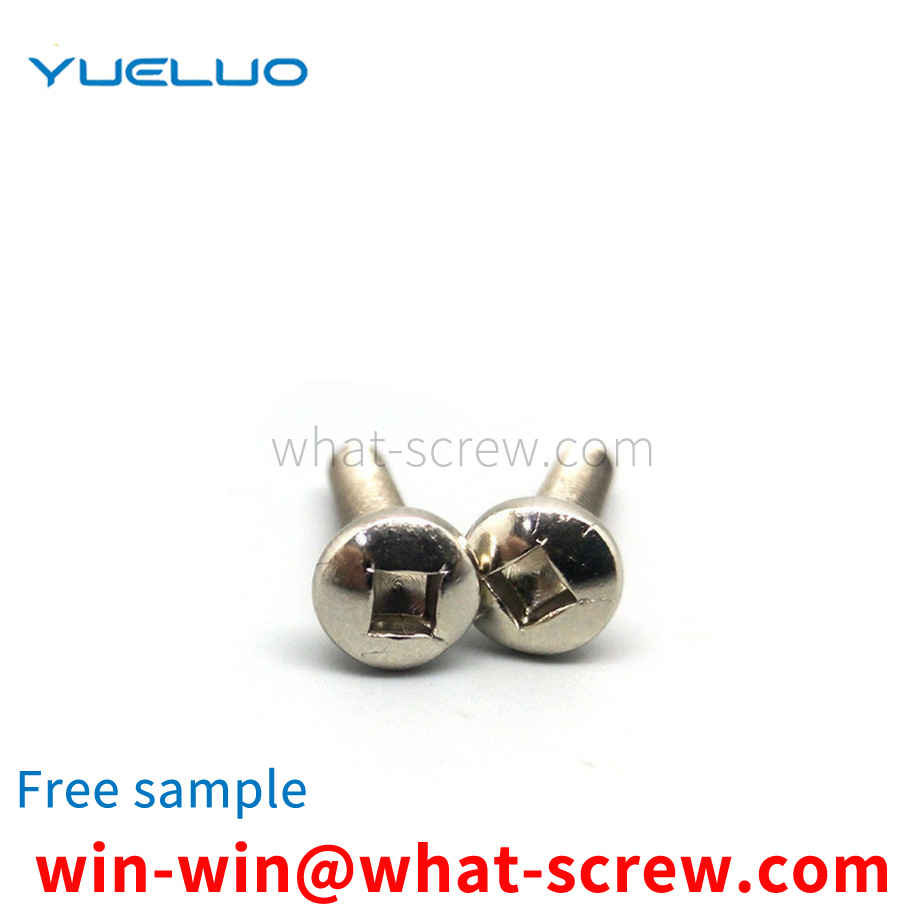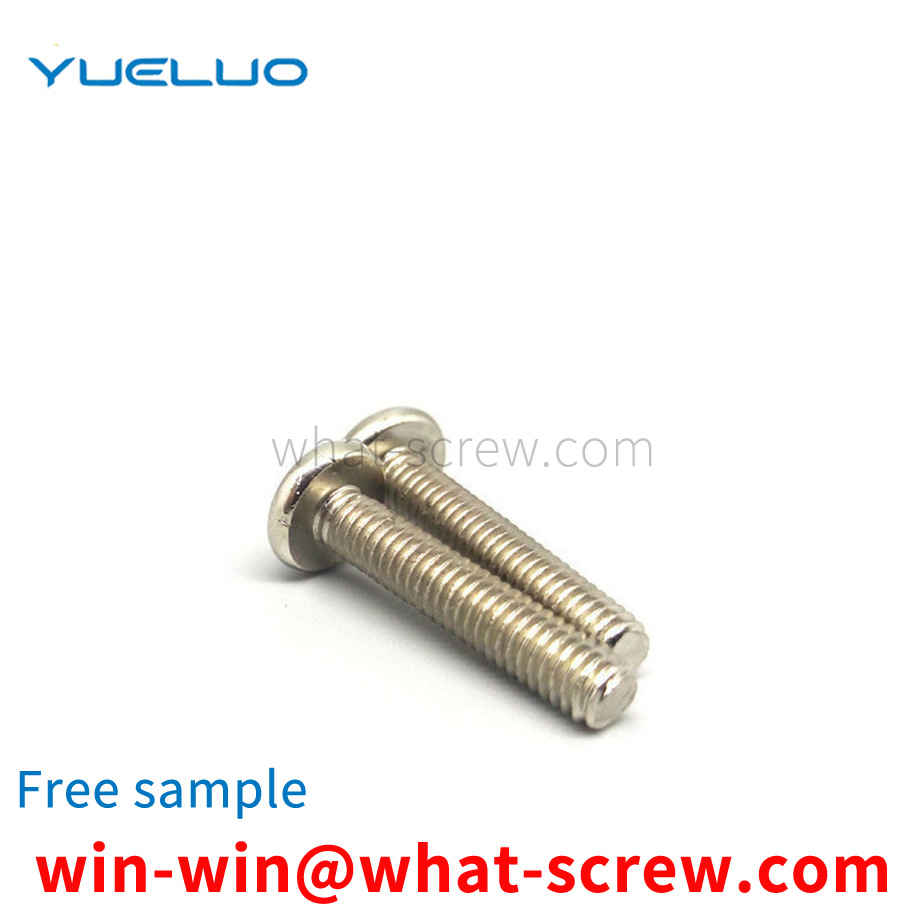Anti-loose washers are also known as anti-loose washers, self-locking washers, self-locking gaskets, DIN25201 anti-loose washers, double-stack self-locking anti-loose washers, double-stack wedge-type anti-loose washers, etc.
If you are installing rivet nuts specially, you can use a grinder, use a rivet machine, if you are a non-professional, you can directly install a few, and then tap with an awl. Rivet equipment (manual or pneumatic) cannot be used in the field of fastening using hammers to pull rivet nuts. It is widely used and is mainly used in the assembly of electromechanical and light industrial products such as aviation, furniture, automobiles, instruments, machinery, and decoration. Of course, it is more common than the rivet nut, and it is often difficult to distinguish.
With the advancement of technology in various industries, the current structural design of screws has evolved from just simple locking to focusing on work efficiency during the locking process and not destroying the integrity of the objects to be locked. The new cases such as No. 556784 screw improvement and No. 289405 screw that integrates locking, stability, labor-saving, fast and multi-function which were previously designed and approved and published in the Central Taiwan Bulletin are the main representatives of screws. It is clear that It is learned that the two cases not only fully improve the shortcomings of the traditional simple locking screws, but also achieve the purpose of substantial improvement of the screws designed in each case in actual use.
However, for some thin-walled parts (such as metal material parts with a thickness of less than 1mm), the combination of cylindrical pins and edge-cutting positioning pins is used as the positioning method on the workstation equipment. In the process of automatic grasping by mechanical grippers, there are many The disadvantage is that if the positioning accuracy is to be met, it is inconvenient for the parts to be placed in the station utensils, and it is also inconvenient for the mechanical gripper to grasp the parts, and it is easy to cause the phenomenon of positioning pin hook parts when grasping the parts. Abandon the positioning and matching accuracy of pins and holes, but in the process of equipment assembly, due to poor positioning accuracy, another phenomenon will occur, that is, the positioning pins on the mechanical gripper are not aligned with the positioning holes of the workstation equipment, so that the equipment Frequent errors. As shown in Figure 2, when the mechanical gripper grasps thin-walled parts with an inclined angle, if a cylindrical pin is used, there must be a large gap between the cylindrical pin head and the part positioning hole, that is, the diameter A of the part positioning hole must be larger than Only when the diameter B of the cylindrical pin head is larger, the parts can be picked and placed.
total of 13 domestic automotive fastener companies were interviewed and investigated in this survey, and all the companies under investigation have passed the TS16949 system certification. An average car has about 1500 fasteners, and the total bolt assembly time for each car is about 2.5~3.2h. It can be seen that the variety and quality of fasteners have an important impact on the level of the main engine and the quality of the vehicle. This article analyzes the localization of high-strength threaded fasteners and the management of supply quality from the perspective of the production process of high-strength threaded fasteners. Product flow of high-strength threaded fasteners The production process of high-strength threaded fasteners is raw material transformation → cold heading forming → thread processing (thread rolling or thread rolling) → heat treatment → surface treatment → sorting and packaging, generally used above grade 10.9 Thread rolling process after heat treatment. The steel grades commonly used for high-strength bolts of automotive fastener materials are 35 steel, 45 steel, and ML35 steel for grade 8.8 bolts; 35CrMo for grade 10.9 bolts; 40Cr; 35CrMo, 42CrMo, and SCM435 for grade 12.9 bolts. The raw materials for domestic fasteners are basically in the hot-rolled state, while the steel for fasteners produced in Japan and other countries is basically in the state of direct cold heading. Users do not need pretreatment, which can reduce costs from the link. Common failure modes of fastener failure are assembly elongation, fatigue fracture, and delayed fracture. In addition to the material, the quality of cold heading forming and thread processing (thread rolling or thread rolling, tapping) threaded fasteners, forming equipment and thread processing equipment and molds (production process and equipment) are the key factors to ensure their quality. Especially in the state of large-scale and multi-variety supply, automotive fasteners that require high machining accuracy, how to ensure product consistency and defect prevention is one of the problems faced by fastener production. For the cold heading equipment and thread processing equipment of the investigated companies, domestic equipment accounts for about 40%, Taiwan equipment accounts for 50%, and imported (Europe, America, Japan) equipment accounts for about 10%; Partial folding, thread streamline upsetting, tooth wrinkles and cracks, etc. Domestic fastener factories are limited by capital or other reasons, and most of them use domestic equipment and Taiwan equipment to produce fasteners for automobiles. To ensure the dimensional tolerance and geometric tolerance of large-scale production of high-end fastener products, online monitoring should be increased. Means and mold making level. Eliminate unqualified products in production, so as to ensure the assembly quality of OEMs and OEMs. [1] About 80% of the surveyed fastener enterprises have heat treatment equipment, and most of them use Taiwan heat treatment process lines; the process line equipment is a continuous mesh belt furnace with atmosphere protection, and the atmosphere, temperature and process parameters are controlled by a computer. The high-strength fastener industry is a relatively competitive industry. If we want to have a thorough and objective analysis of the technology and market of the high-strength fastener industry, we need to start from the following aspects: domestic high-strength fasteners Industry and Enterprise Competition Pattern High-strength Fastener Industry Industrial Policy High-strength Fastener Product Technical Standards and Regulations my country's High-strength Fastener Product Technology Competition Pattern Dynamics Regarding these six aspects, many domestic research institutions have conducted in-depth research and research, and many institutions have long been engaged in research and research in this industry.
We have many years of experience in the production and sales of screws, nuts, flat washers, etc. The main products are: black single-pass copper column, cup head high-strength screws, implosion expansion screws, hexagonal screws with inner socket and other products, we can provide you with suitable products Your fastener solution.



















 Service Hotline
Service Hotline




